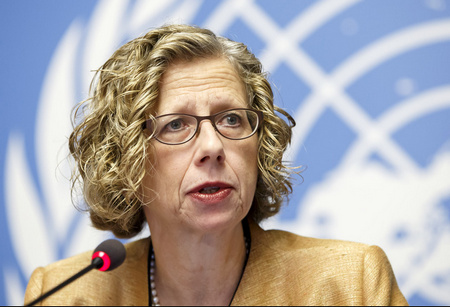Summary of the Combined COP 12(II) and MOP 33: 23-29 October 2021
November 08, 2021
“The effective implementation of the Montreal Protocol and the Kigali Amendment will go down in history as having put humanity back on track to a peaceful and sustainable future.”

Those were the words of Inger Andersen, Executive Director of the United Nations Environment Programme (UNEP), at the close of the meeting, but which guided how delegates worked through a limited, but intense agenda.
Convening online to consider time-sensitive issues, the combined twelfth meeting of the Conference of the Parties to the Vienna Convention for the Protection of the Ozone Layer (part II) and the thirty-third Meeting of the Parties to the Montreal Protocol on Substances that Deplete the Ozone Layer (COP 12(II)/MOP 33) took key decisions related to monitoring controlled substances and energy efficiency.
Due to the unexpected emissions of trichlorofluoromethane (CFC-11) in 2018, the issue of gaps in monitoring of substances controlled by the Protocol has been growing in the scientific community as well as among parties to the Protocol. Although additional monitoring responsibilities may be seen as burdensome, developing countries have long been calling for the requisite capacity and infrastructure to effectively implement the Protocol. At this meeting, delegates took the first step, requesting the assessment panels to work out what would be needed to increase the monitoring capacities in regions where capacity is limited or altogether absent.
Delegates also continued work on what is becoming an increasing focus of the Montreal Protocol: low global-warming-potential (GWP) and energy efficient technologies. Five years after the adoption of the Kigali Amendment to the Protocol, the need for more sectors to adopt energy efficient technologies is an increasing concern and desire among all parties. The meeting considered two draft decisions, which took different approaches to address this issue. One, which was forwarded to the next in-person meeting of the MOP, addressed trade in soon-to-be obsolete technologies, which could be a threat to the future implementation of the Kigali
Amendment. The other sought to broaden the list of sectors required to implement more energy-efficient technology. Both drafts gave parties much food for thought throughout the seven-day meeting. Over 300 delegates attended this meeting, and worked collaboratively to overcome the challenges of the online setting, adopting 18 decisions on administrative and technical matters on, among others:
- the replenishment of the Multilateral Fund;
- financial reports and budgets of the trust funds for the Vienna Convention and the Montreal Protocol;
- compliance and reporting;
- membership of Montreal Protocol bodies; and
- recommendations of the Ozone Research Managers of the Vienna Convention.
Due to the COVID-19 pandemic, COP 12(II)/MOP 33 was held virtually from 23-29 October 2021, with the preparatory segment convening from 23-28 October, and the high-level segment convening on 29 October 2021.


